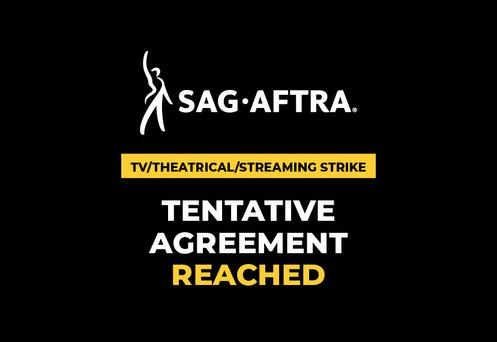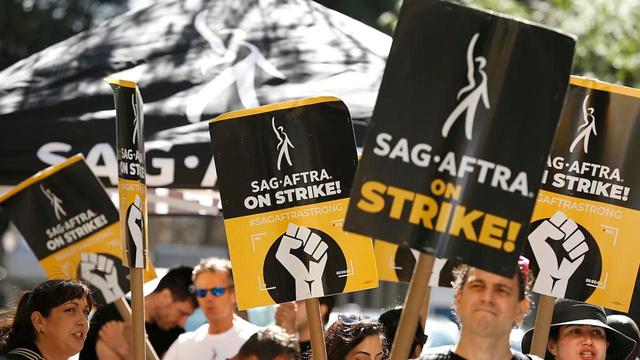
1 minute read
Update On The 2023
SAG-AFTRA Strike

Advertisement
by Stephanie Zhang Entertainment Editor
The SAG-AFTRA (Screen Actors GuildAmerican Federation of Television and Radio Artists) strike, which began on July 14th, officially ended on November 9th after 118 days of work interruption. The union announced that it has reached tentative agreements with the major production studios. The negotiations between the SAG-AFTRA and the AMPTP (Alliance of Motion Picture and Television Producers) mainly regarded the work conditions of the entertainment industry, or more specifically those of actors and performers.
As one CTV News article states, the strike widely concerned “ ... both shortterm compensation and future royalty payments for film and TV performances, along with control over actors' images and likenesses regenerated with artificial intelligence.”
A new 3 year contract was agreed upon between the two parties, and has yet to be approved by the members of the SAG-AFTRA by vote. Under the new contract, diverse parts of actors’ jobs were modified. Their minimum pay is set to increase; for example, someone with a speaking role should expect their pay to be 7% more than what they were paid before.
Aside from changes in minimum wage, on productions that attract a relatively large number of viewers on streaming services (e.g. Netflix and Disney+), actors should expect to be paid better residual money (a long term payment actors earn after a show airs) and higher bonuses on top of that. Additionally, producers need to obtain actors’ consent if they wish to create and use digital replicas of them with AI technology.
While the strike has ended, this is only the beginning for actors and other staff working in the entertainment industry; as the world leans more and more towards streaming and new technologies that bring innovation and convenience, so does the need for fair compensation to meet people’s living expenses. For more information about the strike, visit the official SAG-AFTRA website at https://www.sagaftra.org/




